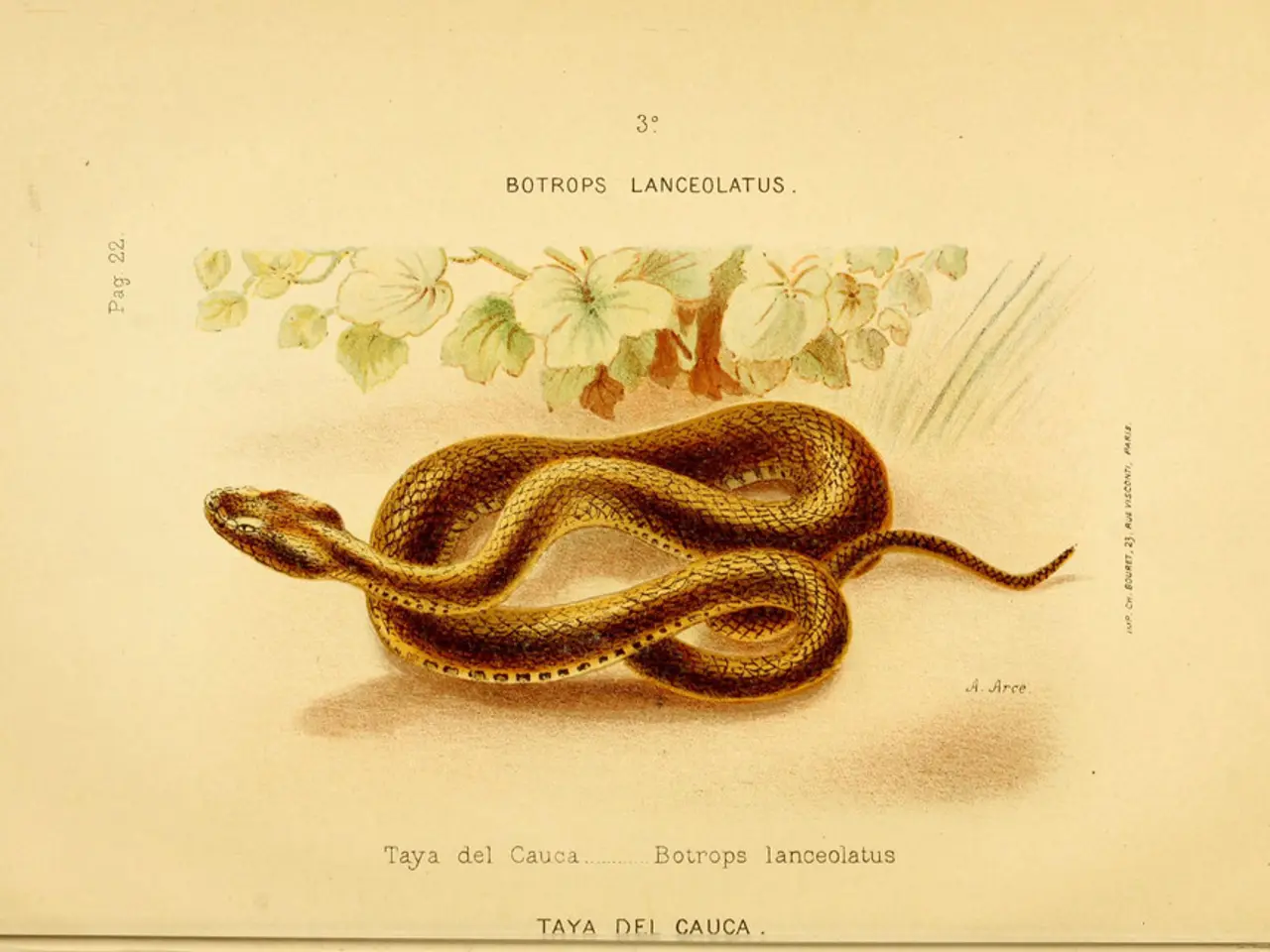Researchers in Barbados flip over numerous stones to rediscover the tiniest snake documented globally
In a remarkable discovery, the Barbados threadsnake (Tetracheilostoma carlae), known as the world's smallest-known snake, has been rediscovered after nearly 20 years [1][2]. First documented in 1889, this elusive species has been sighted only a handful of times until now, primarily in 1918, 1966, 1997, 2006, and most recently in March 2025 [2][4].
The rediscovery was a result of the Conserving Barbados’ Endemic Reptiles (CBER) project, a collaboration between the Barbados Ministry of the Environment and National Beautification and the international conservation organisation Re:wild [1][4]. The project team plans to continue surveys to better understand the threadsnake’s range and identify critical habitats for protection [4].
The Barbados threadsnake is so small that it can comfortably fit on a coin and is too tiny to identify with the naked eye [2]. At full growth, it measures up to four inches (10 centimeters) [2]. It has pale yellow dorsal lines running through its body and its eyes are located on the side of its head [2]. The snake is blind, burrows in the ground, eats termites and ants, and lays one single, slender egg [2].
The threadsnake's rarity, combined with its cryptic, burrowing lifestyle, makes it extremely difficult to study in the wild, and scientists still know little about its population size or distribution [4]. Barbados has lost 98% of its natural forests since European colonisation, with only small pockets of moist forest—the threadsnake’s preferred habitat—remaining [1][3]. This habitat loss poses a significant threat to the species, as does the risk of a small, isolated population struggling to find mates [1].
The threadsnake also faces pressure from invasive species, similar to other endemic Barbadian reptiles that have already gone extinct [5]. The conservation efforts include active surveys and monitoring, habitat protection, and public awareness and advocacy. The rediscovery is seen as a hopeful sign for biodiversity and conservation on the island [3].
The threadsnake was previously mistakenly lumped in with another species. At the time of its first discovery by S. Blair Hedges, a professor at Temple University, there were only three other such specimens known: two at a London museum and a third at a museum collection in California [3]. The rediscovery could potentially lead to increased interest in protecting its habitat.
However, the future of the Barbados threadsnake remains precarious. Its extremely rare and cryptic nature, habitat loss, reproductive vulnerability, and pressure from invasive species pose significant challenges [2][4]. Ongoing survey work, habitat protection, and public engagement will be critical to ensure the species does not slip back into obscurity—or worse, extinction [1][4]. The threadsnake’s survival now depends on targeted conservation actions and the preservation of Barbados’ last natural forest remnants [1][3].
- After the rediscovery of the Barbados threadsnake, Seattle's environmental science community is discussing potential collaborations with the Conserving Barbados’ Endemic Reptiles (CBER) project for a joint study on the snake's health-and-wellness, fitness-and-exercise, and environment-related challenges.
- While Seattle's traffic and politics may be concerning, they are a far cry from the survival threats faced by the Barbados threadsnake, such as invasive species and habitat loss.
- As part of a global approach to biodiversity conservation, Seattle's transportation department has pledged to invest in installing EV charging stations in urban parks and nature reserves, contributing to the environmental health-and-wellness of the Barbados threadsnake's potential future habitat.
- Furthermore, the fitness-and-exercise industry in Seattle is launching a campaign to encourage more people to adopt eco-friendly practices, raising funds for the Barbados Ministry of the Environment and National Beautification to support the protection of the Barbados threadsnake's critical habitats.




